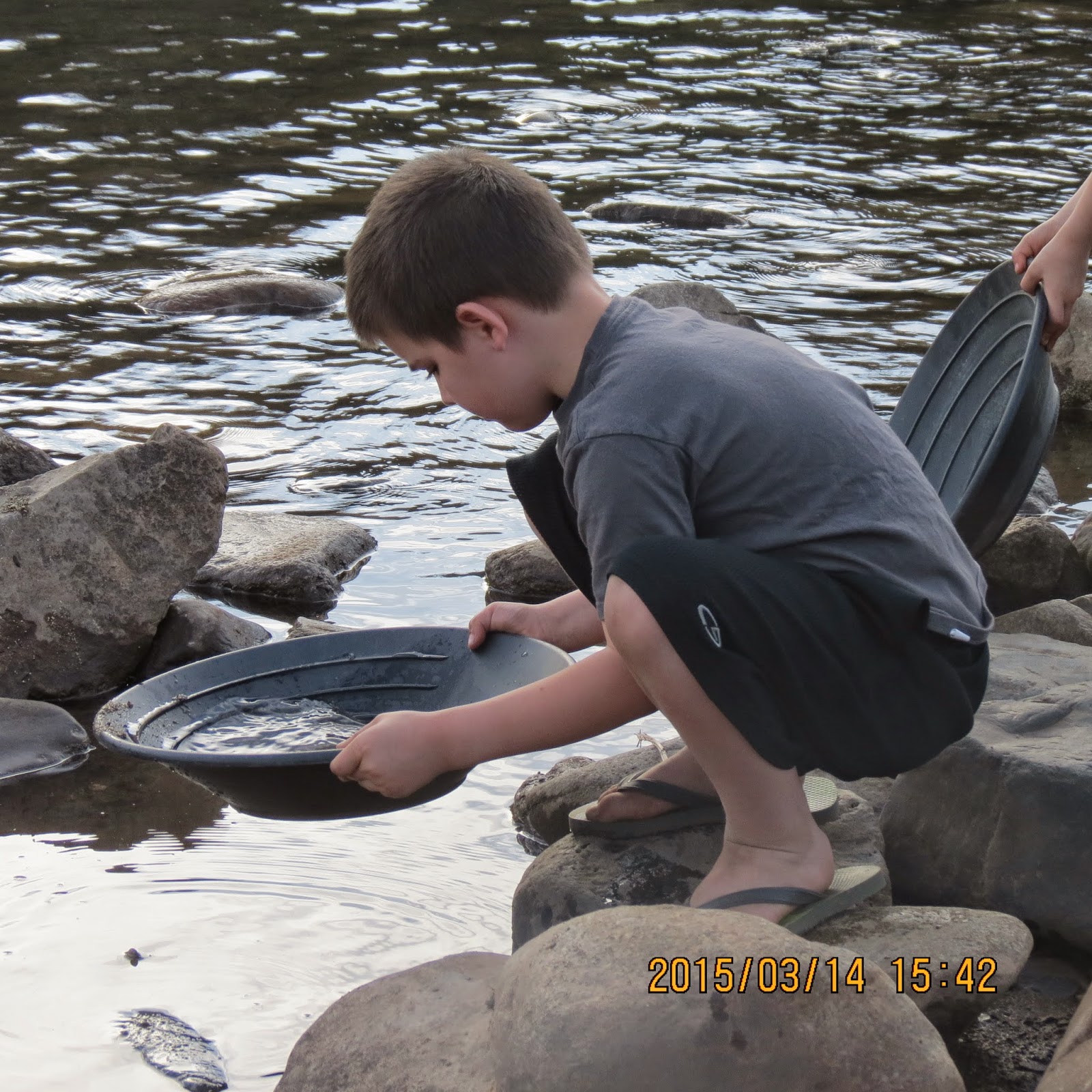Wow, our time in Sacramento is passing so quickly! We were stationed here from 2004-2008, so we are blessed to have great friends as well as some family here. We haven't been back since moving to Fort Carson, so our priority has been to spend as much time as possible with as many of them as possible. In our spare time, we've been studying the California Gold Rush. As part of our unit study we spent an afternoon in Coloma at the site where James Marshall first found gold on the American River. The area has since been turned into the 80 acre Marshall Gold Discovery Park.
The park has a one room museum with artifacts from the 1840's and static displays of James Marshall finding and panning for gold, as well as some information and displays about the local Native American community.
We were fortunate to stumble into the park on Living History Saturday (the 2nd Saturday of the month), where the park has several docents and volunteers do demonstrations of things like basket weaving, dutch oven cooking, and other tasks that were essential to life in the 1840's.
 |
| Ms. Jan was a sweet lady who answered a million questions about basket weaving for the kids. When Patton correctly identified the bird that had provided the feathers for one of the baskets she had on display she was thoroughly impressed and a quick friendship was struck. |
The museum provided interesting information, but the meat of the park is in exploring the grounds. A few of the original buildings have been preserved and several have been replicated, as have several pieces of machinery.

 |
| A simple sluice box |
 |
| A replica of a miners cabin |
 |
| Grinding stones |
 |
| One of the early methods of extracting gold from quartz was to attach horses to this piece of machinery which used the grinding stones to grind the quartz. |
 |
| A water cannon used for hydraulic mining. We learned on our visit that the concept of hydraulic mining was actual born in Mexico. |
 |
| An ore cart. |
 |
| Stamp Mill |
 |
| Randomly, a pretty purple tree. |
 |
| One of the out buildings was a mini museum that provided more information on the actual mining process. The tunnel connected two rooms and reminded us all of Pioneer Park! |
 |
| Several of the original rocks had chain link still in them. |
 |
| There was a large population of immigrants from China who came to mine for gold. In China California was called "Gold Mountain". This is one of the original buildings in the park and it served the Chinese community as a bank, store, and gathering place. |
 |
| Patton is reading the informational sign about Grandmother Rock, the rock where the Native Americans would come to grind acorns. |
 |
| See those holes? They're the result of the centuries of grinding acorns. |
 |
| Bark houses were the shelter of choice for the local Natives. |
 |
| The Munroe Family, original owners of the land that the park now stands on. |
 |
| It was SO hot! |
 |
| St. John's Catholic Church. This was the first church built to serve this community. The Munroes and several well known miners are buried in the cemetery behind it. |
 |
| Emmanuel Church |
 |
| As an added bonus when you visit the park, you get to mark "California's Shortest State Highway" off of your bucket list. |
 |
| The view from the Marshall Monument |
 |
| The Marshall Monument. The statue is holding a gold nugget and pointing to the spot on the American River where Marshall first found gold. |
 |
| The Coloma Bridge |
When the sun started to dip behind the hills (the El Dorado Hills) we decided to head down to the American River to see if we could find any of Marshall's Gold. We didn't find any, but we had a great time splashing around in the river and trying to identify the rocks we did find. We were able to bring home several large pieces of quartz that I'm sure will meet a hammer some time this week.
During our visit we learned a few interesting facts that had either not been presented or had not been presented in their entirety in the reading we had done up to that point.
To start, Marshall's discovery of gold on the American River was not the first gold to be found in California. Gold had been already been found in Southern California, but the prospectors had been able to keep their find quiet.
Marshall and the men working with him tried to keep their find secret as well, but their discovery was revealed by Sam Brannan. Brannan was an elder in the Mormon Church. When he arrived in Coloma a few of the Mormon men prospecting their offered him a portion of their gold as a tithe. This was the gold that he took to San Francisco and presented to the masses. This is what actually kicked off the California Gold Rush. As for San Francisco, it was described as being a ghost town in the late 1840's.
Obtaining information like this, that you would not normally find in a cursory study of a place or an event, is by far the best part of being able to visit places first hand.
By the end of the day the Fire Team was filthy, exhausted, and ready for their next adventure, so keep an eye out to see what we're up to this week!

















































No comments:
Post a Comment